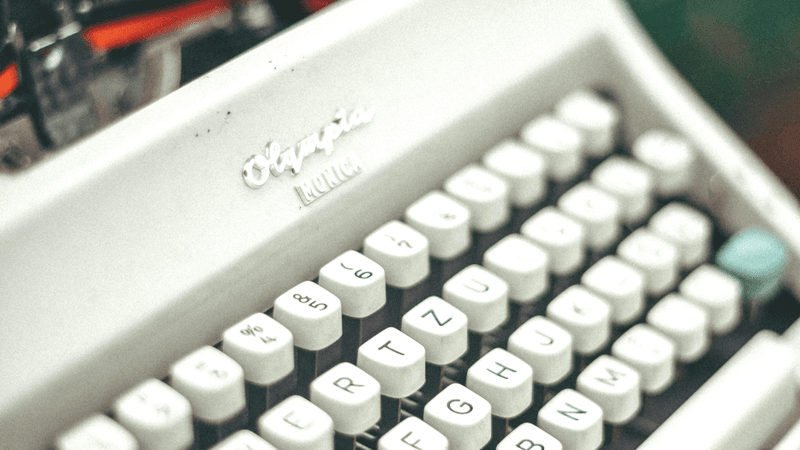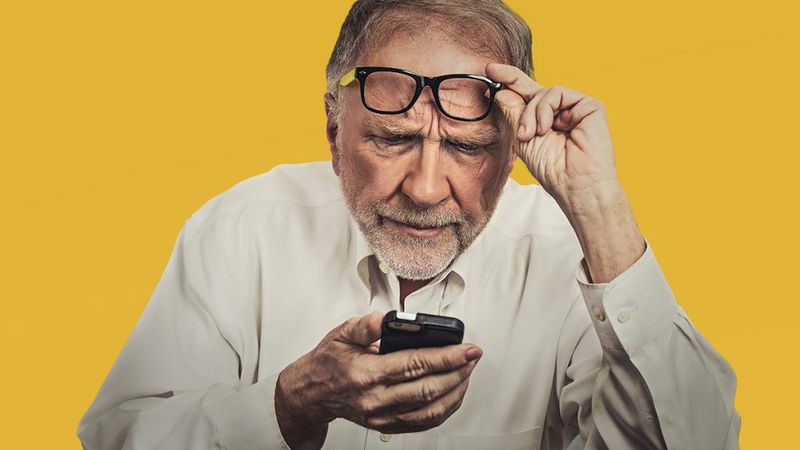12 Reasons Boomers Were The First Digital Immigrants (And Why It Mattered)

Remember the first time you watched a Baby Boomer struggle with email attachments? I sure do—my dad actually printed them out, wrote his reply by hand, and then scanned the page back in to email it.
Born between 1946 and 1964, Boomers were already adults when personal computing took off, making them the original digital immigrants. While younger generations grew up swiping and tapping, Boomers had to adapt—sometimes awkwardly—to a world of icons, apps, and cloud storage.
Their journey from typewriters and rotary phones to smartphones and video calls wasn’t just about learning new tools; it fundamentally influenced how technology evolved to bridge generational gaps.
Their trial-and-error approach laid the groundwork for more intuitive designs and user-friendly interfaces that we often take for granted today. In many ways, they were the first to beta test our digital world.
1. From Rotary to Smartphone: The Great Telephone Leap

Whiplash is what many Boomers experienced going from rotary phones with party lines to smartphones with video calls. My aunt still dials phone numbers from memory because that’s how she did it for 40 years! Growing up in homes where making a long-distance call was a special occasion, they suddenly found themselves carrying pocket-sized supercomputers.
The transition wasn’t just about new gadgets—it represented a fundamental shift in communication norms. Boomers had to rewrite their understanding of availability and privacy. While younger generations instinctively adapted to texting culture, many Boomers still prefer to hear a voice on the other end of the line.
This telephone evolution serves as a perfect microcosm of their broader tech journey: adaptation through necessity rather than native fluency.
2. Paper Trails vs. Digital Footprints

Filing cabinets were once the backbone of Boomer information management. I still chuckle remembering my mother’s meticulous color-coded folders while I showed her how to use cloud storage. Their generation developed organizational systems around physical documents—tax returns in manila folders, recipes on index cards, photos in albums.
Suddenly, everything went digital. The tangible security of paper gave way to passwords and virtual storage. This shift required not just learning new tools but embracing an entirely different philosophy of information management.
Many Boomers became hybrid organizers, printing important emails “just in case” while gradually trusting digital systems. This paper-to-pixel transition influenced how software developers designed interfaces, often incorporating familiar metaphors like “folders” and “documents” to ease the transition.
3. Banking Without Branches

Holy moly, the first time I convinced my father to try online banking was like asking him to walk a tightrope without a net! Boomers grew up in an era when banking meant friendly tellers who knew your name and physical passbooks that recorded every transaction. The idea of managing money through a screen seemed not just foreign but downright reckless.
Trust issues ran deep. Having witnessed financial catastrophes like the Savings and Loan crisis, many Boomers approached digital banking with healthy skepticism. Their hesitation wasn’t mere stubbornness—it reflected legitimate security concerns.
Financial institutions responded by creating robust verification systems and simplified interfaces. Today’s secure banking apps owe much to the careful adoption patterns of Boomers who insisted on bulletproof security before trusting their nest eggs to the digital realm.
4. Encyclopedia Britannica to Wikipedia

Leather-bound knowledge gatekeepers lined my grandparents’ bookshelves—those gorgeous Encyclopedia Britannica volumes represented serious investment in information access. For Boomers, authoritative information came from vetted, published sources with editorial oversight and hefty price tags.
Enter Wikipedia and Google. Suddenly, information became free, abundant, and created by… anyone? This democratization of knowledge creation challenged Boomers’ fundamental understanding of authority and reliability. Who wrote this? What are their credentials? Where’s the editor?
Their skepticism about online sources helped shape critical digital literacy standards. While sometimes dismissed as technophobic, Boomer questions about source credibility anticipated today’s fake news crisis. Their generation’s transition from curated to crowdsourced information helped establish the critical evaluation frameworks we now teach in schools.
5. Learning Tech Without YouTube Tutorials

Cracking open a massive user manual was once the only way to learn new technology! I still marvel at how my Boomer colleagues mastered complex software using nothing but printed documentation and trial-and-error. No YouTube tutorials, no Reddit threads, no live chat support—just dense technical writing and perhaps a friend who’d figured it out.
This self-taught approach to technology created a generation of methodical problem-solvers. When something didn’t work, they troubleshot systematically, building mental models of how systems functioned rather than following quick-fix videos.
Their learning style influenced early software design significantly. Detailed help menus, step-by-step wizards, and comprehensive documentation became standard features because the first digital immigrants needed these scaffolds.
6. The Office Evolution: From Typewriters to Google Docs

Clackety-clack went the typewriters that dominated Boomer workplaces when they started their careers. Mistakes meant starting over or deploying the magical white-out. I watched my mentor’s eyes widen in disbelief when I showed him how Google Docs automatically saves every few seconds—a concept utterly revolutionary to someone who once lost hours of work to power outages.
The transformation of workplace technology perhaps affected Boomers most directly. Suddenly, secretarial pools disappeared, executives typed their own correspondence, and paper memos gave way to emails.
Collaborative documents, instant messaging, and virtual meetings required completely reimagining workflows they’d mastered over decades. This massive workplace shift created unique management challenges as Boomers often supervised digital natives while still mastering tools themselves—a dynamic that influenced modern workplace training approaches and multigenerational collaboration models.
7. Social Connections: From Rotary Clubs to Facebook

Neighborhood barbecues and Rotary Club meetings once formed the backbone of Boomer social networks. Genuine belly laughs erupted when my mother-in-law discovered Facebook and promptly friend-requested everyone in her church directory!
Digital social networks eliminated geographic barriers but introduced new complexities. Boomers had to translate lifetime-honed social skills to platforms with entirely different norms and etiquette. Many approached social media with the same community-minded spirit that defined their offline interactions.
Their mass adoption of platforms like Facebook transformed social media from youth-focused spaces to multigenerational meeting grounds. Family connections often drove their participation, with grandchildren’s photos being the gateway drug that hooked many Boomers on regular platform use—ultimately reshaping how families communicate across distances.
8. The Digital Divide Within a Generation

Not all Boomers adapted equally! My tech consultant uncle embraced every gadget while my librarian aunt still prefers landlines and paper maps. This intra-generational digital divide created fascinating social dynamics, with tech-savvy Boomers often becoming unofficial IT support for their peers.
Economic factors heavily influenced adoption patterns. Boomers in technology-focused careers or with financial resources adapted earlier, while those in traditional industries or with limited means often encountered digital tools later in life.
These varying adaptation rates created unique challenges for businesses and government services transitioning online. Organizations had to maintain parallel systems—paper and digital—much longer than anticipated.
9. From Album Collections to Streaming Services

Vinyl records and carefully organized CD collections represented serious investment and personal identity for music-loving Boomers. Jaw-dropping amazement spread across my uncle’s face when I showed him how Spotify contained virtually every album he’d spent decades collecting! For a generation that associated music ownership with physical media, streaming represented a conceptual earthquake.
The transition wasn’t just technological but philosophical. Music had always been something you owned, displayed, and shared physically. Suddenly it became an ethereal service, accessible anywhere but existing nowhere tangibly.
Many Boomers approached streaming with hybrid behaviors, maintaining physical collections while exploring digital convenience. Their consumption patterns influenced how streaming services developed, with features like curated playlists and album-focused listening options appealing to listeners raised on complete artistic works rather than algorithmic singles.
10. Digital Photography: No More Waiting for Development

Shoeboxes stuffed with photographs and meticulously arranged photo albums documented Boomer family histories. Snorting with laughter, I watched my dad take pictures of a digital camera screen with his film camera when he first upgraded! The concept of immediately seeing your photos—and taking unlimited shots without film costs—revolutionized how they captured memories.
Digital photography eliminated the anticipation of waiting for film development but introduced new complexities around storage and organization. Many Boomers found themselves with thousands of digital photos scattered across devices without the physical organization systems they’d previously relied on.
Their transition shaped how photo apps developed, with features like facial recognition and automatic albums attempting to recreate the organization once handled through physical albums. The Boomer generation’s massive adoption of digital photography also drove the development of simplified printing services, allowing them to bridge digital convenience with physical keepsakes.
11. News Consumption: From Walter Cronkite to Twitter Feeds

Evening news broadcasts with trusted anchors once structured Boomer media consumption. Coffee sprayed from my mouth when my journalism professor father described Twitter as “news confetti”—colorful, everywhere, and impossible to collect coherently! His generation grew up with limited, curated news sources delivering information at scheduled times.
The shift to 24/7 news cycles and social media feeds required developing entirely new media literacy skills. Having spent decades with clear distinctions between news, opinion, and advertising, many Boomers found digital media’s blurred boundaries challenging to navigate.
Their adaptation journey significantly influenced how news organizations approached digital transformation. Legacy media outlets created online experiences that balanced innovation with familiar formats, often maintaining elements of traditional presentation to ease the transition for loyal Boomer audiences while gradually introducing more digital-native features.
12. Privacy Concepts: From Unlisted Numbers to Data Mining

Unlisted phone numbers once represented the height of privacy protection for security-conscious Boomers. Absolute horror crossed my mother’s face when I explained how her favorite shopping apps tracked her browsing habits! Having grown up in an era when privacy was primarily physical, the concept of digital data collection proved deeply unsettling.
Their generation developed privacy expectations in a world where information was typically shared intentionally and with specific parties. The passive data collection central to digital business models created fundamental disconnects with their understanding of personal boundaries.
Boomer privacy concerns significantly influenced digital regulation development. Their questions about data usage and discomfort with tracking contributed to growing societal awareness about digital privacy issues.
